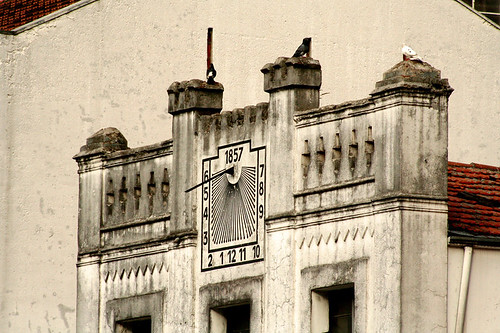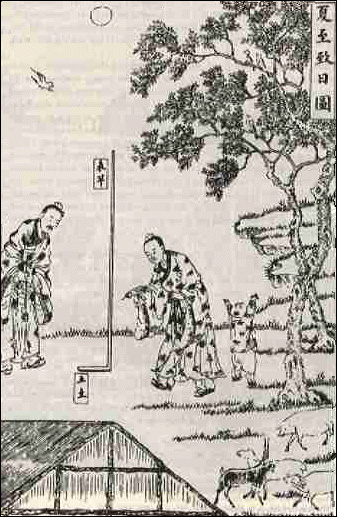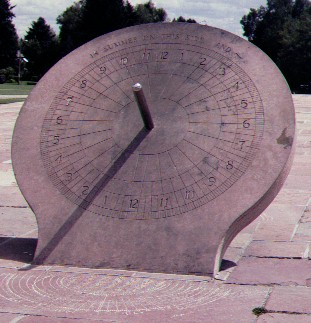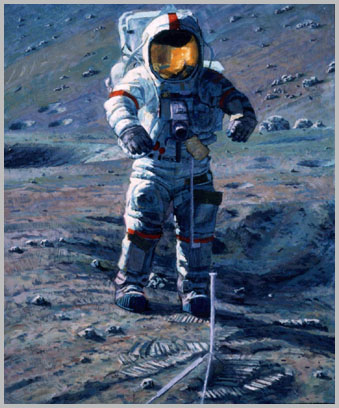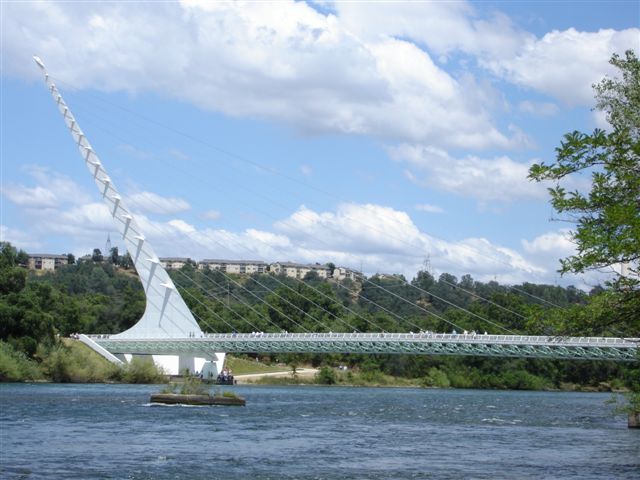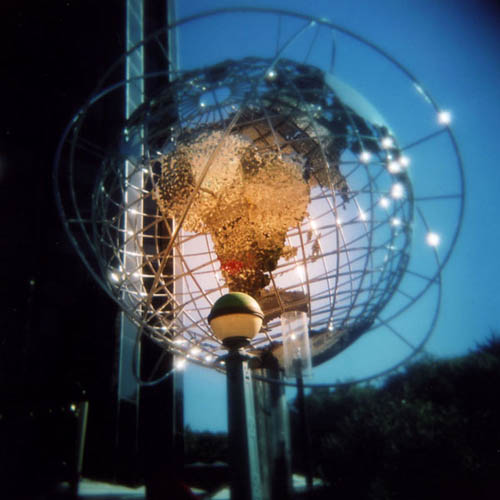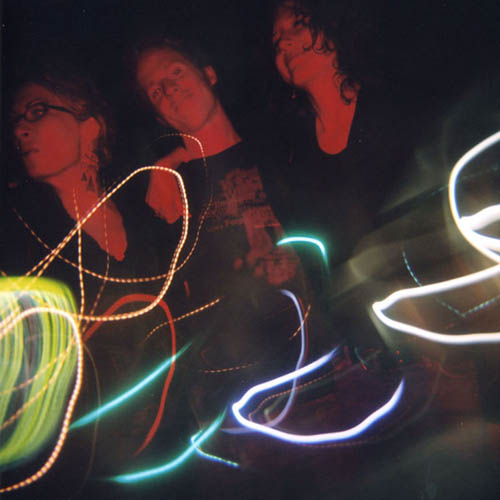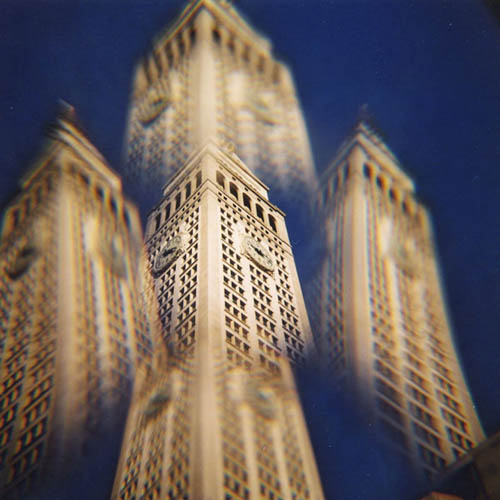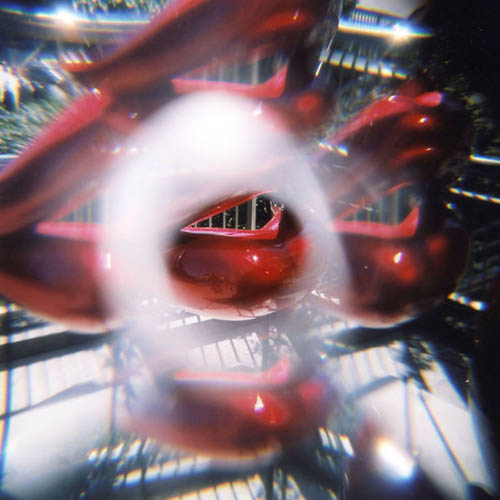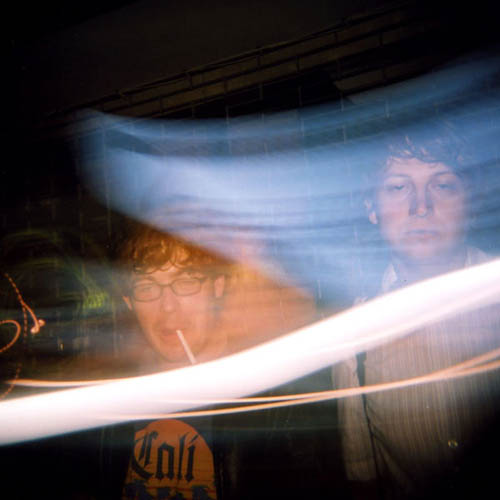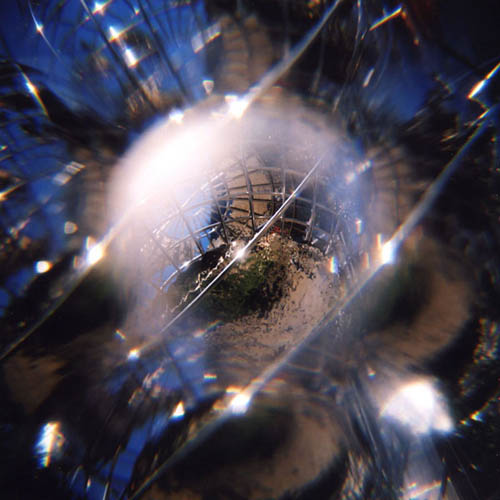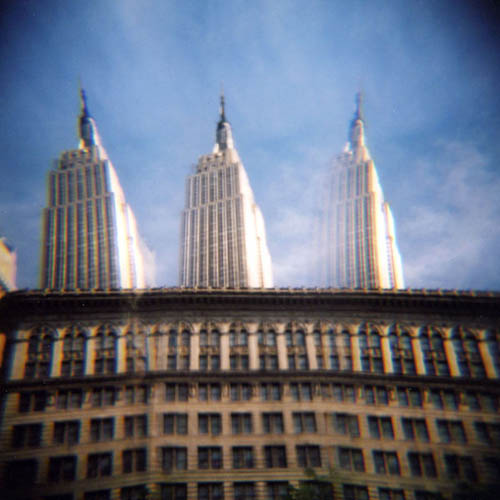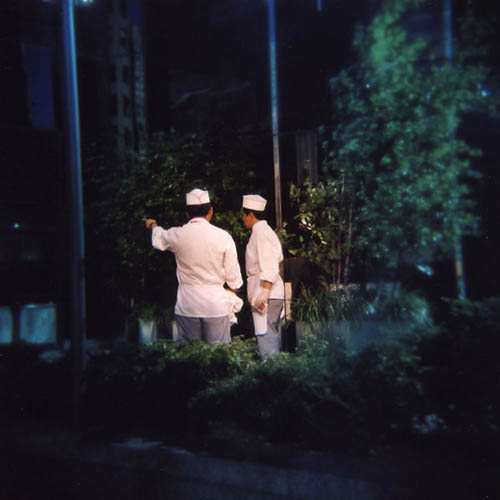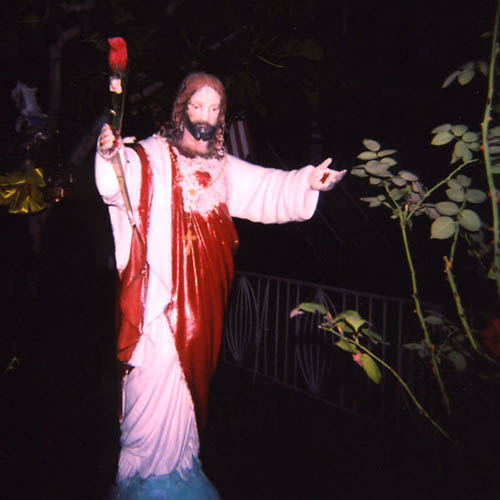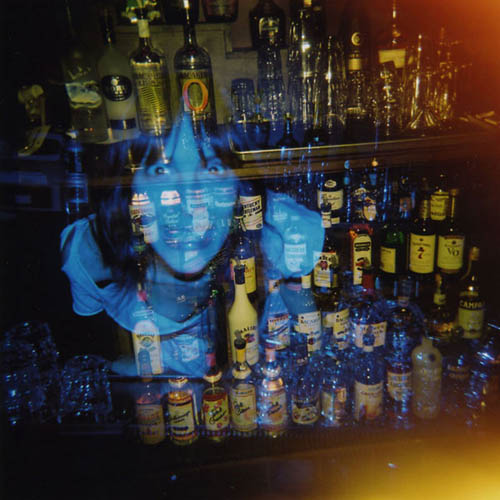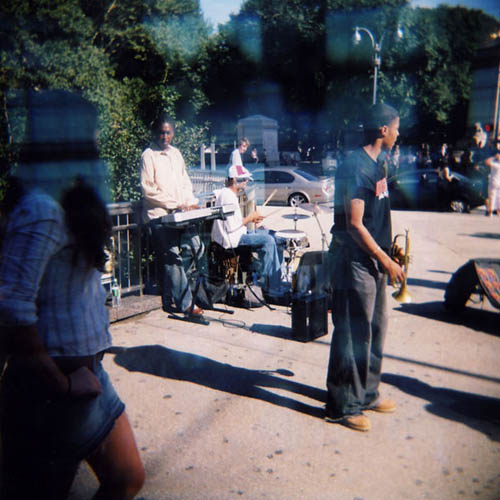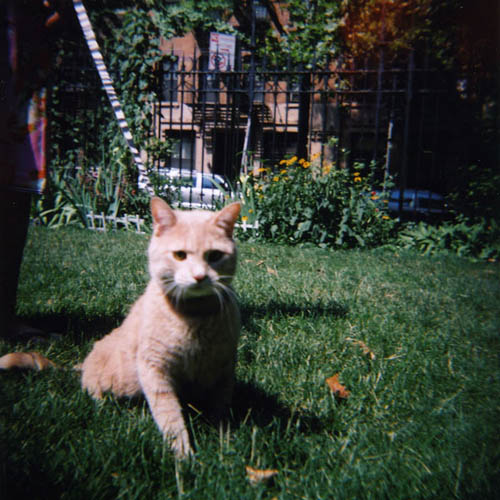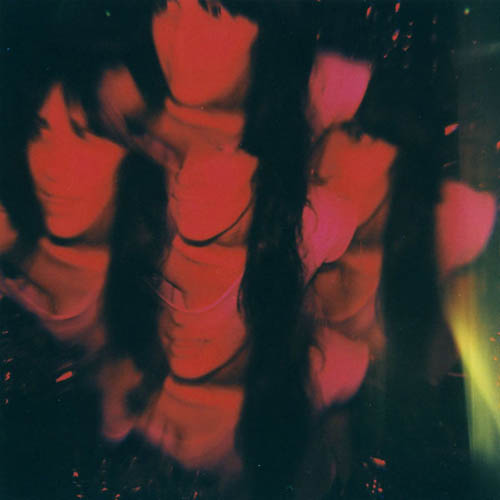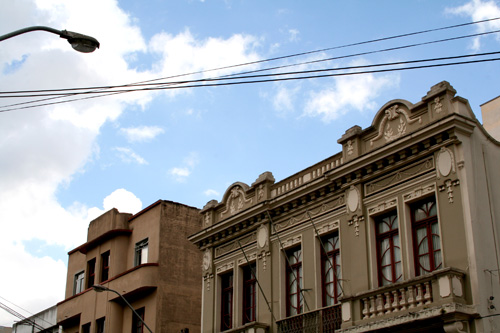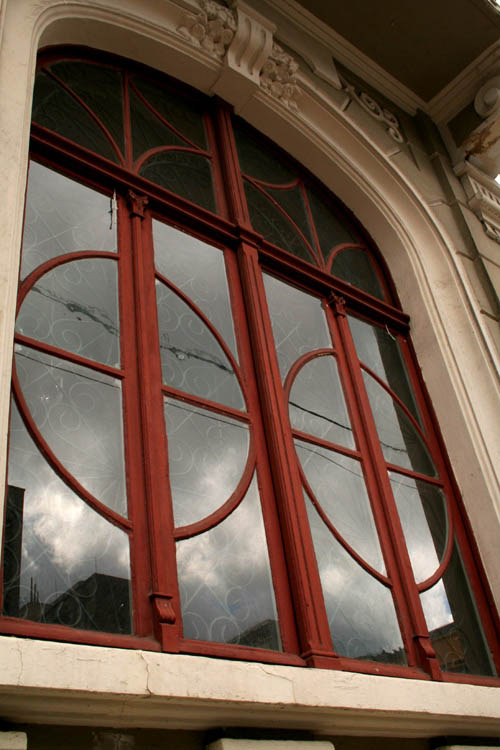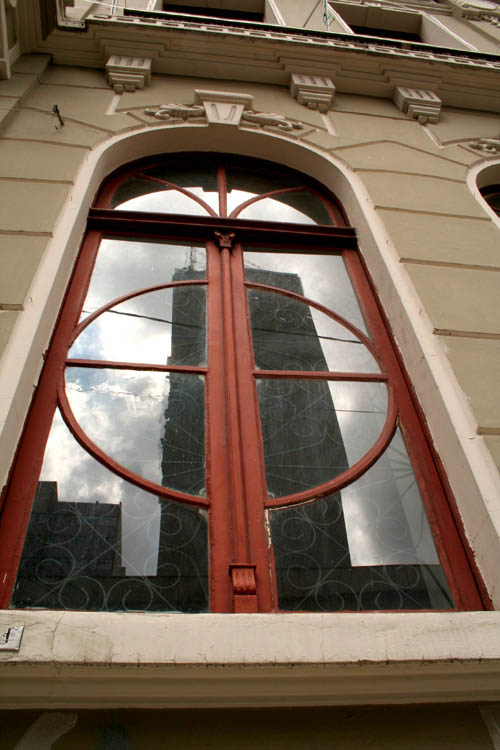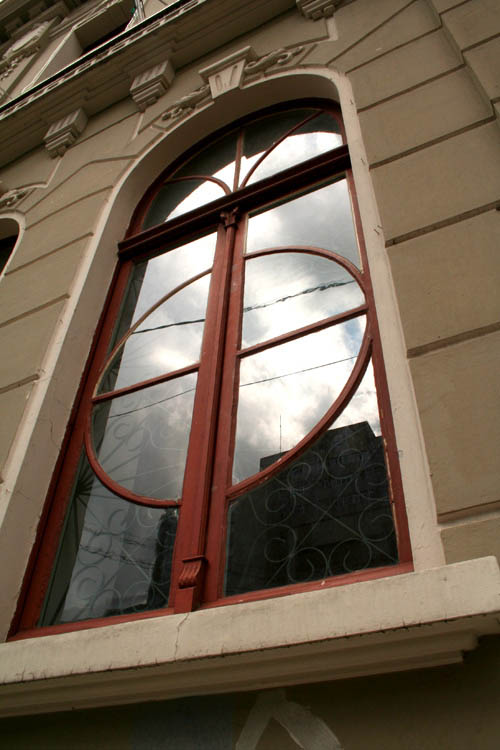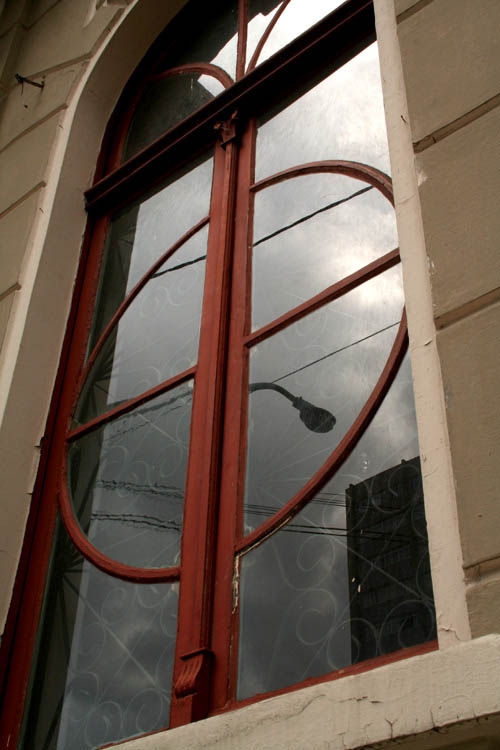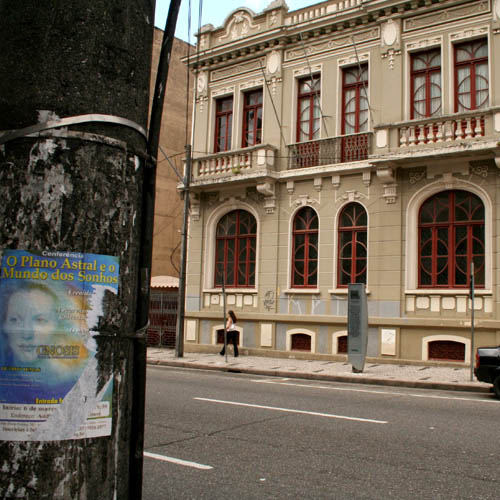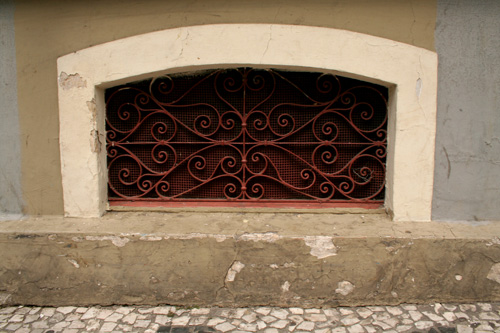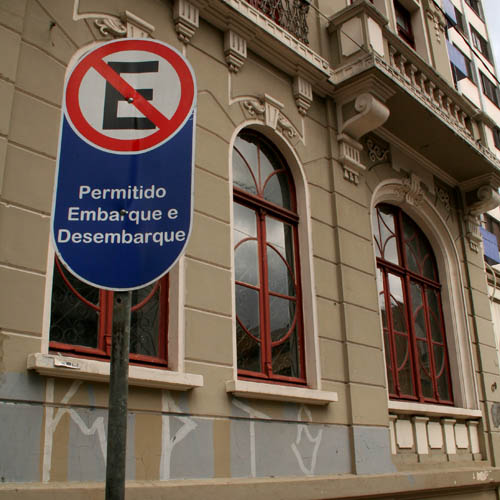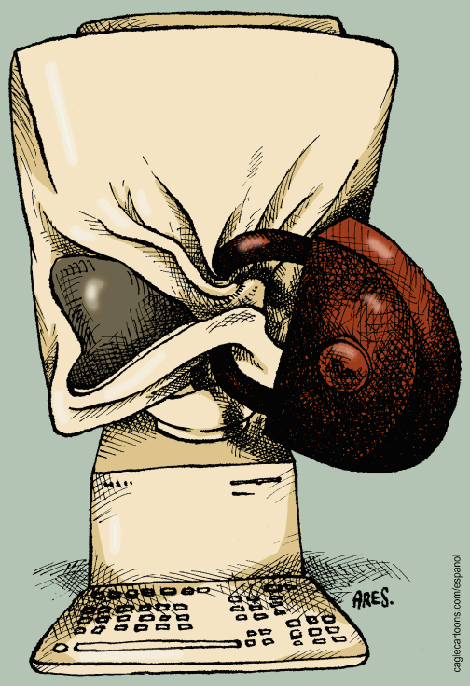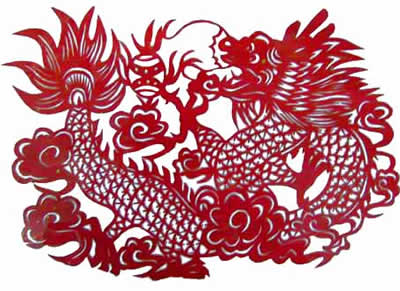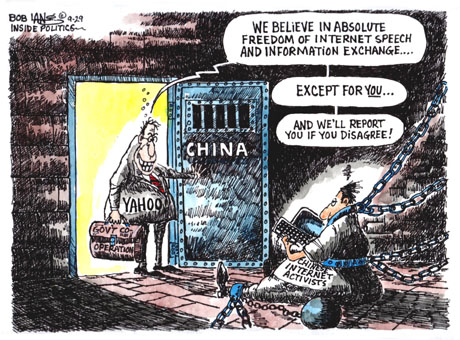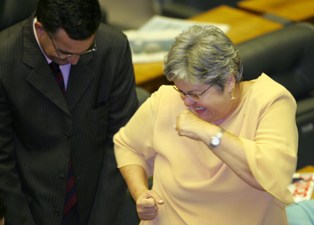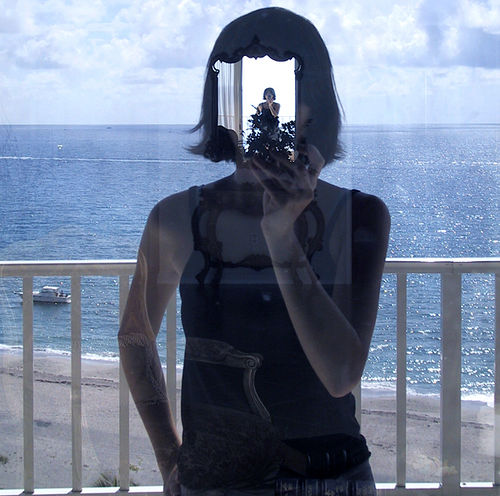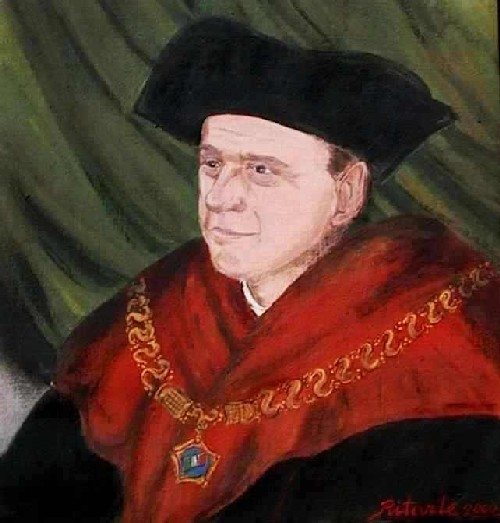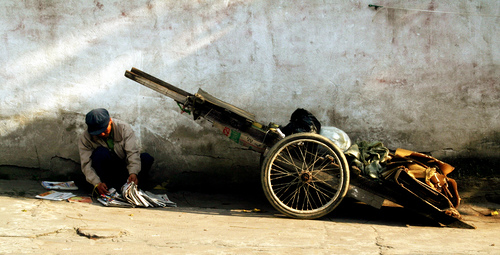
Photo: Mathieu Bertrand Struck

THE WAR OF THE WORLDS
by H. G. Wells
as performed by
Orson Welles & the Mercury Theatre on the Air
and broadcast on the Columbia Broadcasting System
on Sunday, October 30, 1938, from 8:00 to 9:00 P. M.
* * *
ANNOUNCER
The Columbia Broadcasting System and its affiliated stations present Orson Welles and the Mercury Theatre on the Air in “The War of the Worlds” by H. G. Wells.
(MUSIC: MERCURY THEATRE MUSICAL THEME)
ANNOUNCER
Ladies and gentlemen, the director of the Mercury Theatre and star of these broadcasts, Orson Welles.
ORSON WELLES
We know now that in the early years of the twentieth century this world was being watched closely by intelligences greater than man’s, and yet as mortal as his own. We know now that as human beings busied themselves about their various concerns they were scrutinized and studied, perhaps almost as narrowly as a man with a microscope might scrutinize the transient creatures that swarm and multiply in a drop of water.
With infinite complacence people went to and fro over the earth about their little affairs, serene in the assurance of their dominion over this small, spinning fragment of solar driftwood which, by chance or design, man has inherited out of the dark mystery of Time and Space.
Yet across an immense ethereal gulf, minds that are to our minds as ours are to the beasts in the jungle, intellects vast, cool and unsympathetic, regarded this earth with envious eyes and slowly and surely drew their plans against us.
In the thirty-ninth year of the twentieth century came the great disillusionment. It was near the end of October. Business was better. The war scare was over. More men were back at work. Sales were picking up. On this particular evening, October 30th, the Crosley service estimated that thirty-two million people were listening in on radios.
ANNOUNCER
(FADE IN) … for the next twenty-four hours not much change in temperature. A slight atmospheric disturbance of undetermined origin is reported over Nova Scotia, causing a low pressure area to move down rather rapidly over the northeastern states, bringing a forecast of rain, accompanied by winds of light gale force. Maximum temperature 66; minimum 48.
This weather report comes to you from the Government Weather Bureau.
We take you now to the Meridian Room in the Hotel Park Plaza in downtown New York, where you’ll be entertained by the music of Ramón Raquello and his orchestra.
(MUSIC: SPANISH THEME SONG [“NO MORE,” A TANGO]… FADES)
ANNOUNCER THREE
Good evening, ladies and gentlemen. From the Meridian Room in the Park Plaza Hotel in New York City, we bring you the music of Ramón Raquello and his orchestra. With a touch of the Spanish, Ramón Raquello leads off with “La Cumparsita.”
(“LA CUMPARSITA” STARTS PLAYING, THEN QUICKLY FADES OUT)
ANNOUNCER TWO
Ladies and gentlemen, we interrupt our program of dance music to bring you a special bulletin from the Intercontinental Radio News.
At twenty minutes before eight, central time, Professor Farrell of the Mount Jennings Observatory, Chicago, Illinois, reports observing several explosions of incandescent gas, occurring at regular intervals on the planet Mars. The spectroscope indicates the gas to be hydrogen and moving towards the earth with enormous velocity.
Professor Pierson of the Observatory at Princeton confirms Farrell’s observation, and describes the phenomenon as, quote, “like a jet of blue flame shot from a gun,” unquote.
We now return you to the music of Ramón Raquello, playing for you in the Meridian Room of the Park Plaza Hotel, situated in downtown New York.
(MUSIC PLAYS FOR A FEW MOMENTS UNTIL PIECE ENDS… SOUND OF APPLAUSE)
ANNOUNCER THREE
And now a tune that never loses favor, the ever-popular “Stardust.” Ramón Raquello and his orchestra…
(MUSIC: “STARDUST”)
ANNOUNCER TWO
Ladies and gentlemen, following on the news given in our bulletin a moment ago, the Government Meteorological Bureau has requested the large observatories of the country to keep an astronomical watch on any further disturbances occurring on the planet Mars.
Due to the unusual nature of this occurrence, we have arranged an interview with a noted astronomer, Professor Pierson, who will give us his views on this event. In a few moments we will take you to the Princeton Observatory at Princeton, New Jersey.
We return you until then to the music of Ramón Raquello and his orchestra.
(MUSIC: “STARDUST” PLAYS FOR A WHILE, THEN QUICKLY FADES OUT )
ANNOUNCER TWO
We are ready now to take you to the Princeton Observatory at Princeton where Carl Phillips, our commentator, will interview Professor Richard Pierson, famous astronomer. We take you now to Princeton, New Jersey.
(ECHO CHAMBER. SOUND OF TICKING CLOCK.)
CARL PHILLIPS
Good evening, ladies and gentlemen. This is Carl Phillips, speaking to you from the observatory of Princeton. I am standing in a large semi-circular room, pitch black except for an oblong split in the ceiling. Through this opening I can see a sprinkling of stars that cast a kind of frosty glow over the intricate mechanism of the huge telescope. The ticking sound you hear is the vibration of the clockwork.
Professor Pierson stands directly above me on a small platform, peering through the giant lens. I ask you to be patient, ladies and gentlemen, during any delay that may arise during our interview. Besides his ceaseless watch of the heavens, Professor Pierson may be interrupted by telephone or other communications. During this period he is in constant touch with the astronomical centers of the world…
Professor, may I begin our questions?
PROF. PIERSON
At any time, Mr. Phillips.
CARL PHILLIPS
Professor, would you please tell our radio audience exactly what you see as you observe the planet Mars through your telescope?
PROF. PIERSON
Nothing unusual at the moment, Mr. Phillips. A red disk swimming in a blue sea. Transverse stripes across the disk. Quite distinct now because Mars happens to be the point nearest the earth… in opposition, as we call it.
CARL PHILLIPS
In your opinion, what do these transverse stripes signify, Professor Pierson?
PROF. PIERSON
Not canals, I can assure you, Mr. Phillips ââ?¬â?
CARL PHILLIPS
(OFF-MIC) I see.
PROF. PIERSON
ââ?¬â? although that’s the popular conjecture of those who imagine Mars to be inhabited. From a scientific viewpoint the stripes are merely the result of atmospheric conditions peculiar to the planet.
CARL PHILLIPS
Then you’re quite convinced as a scientist that living intelligence as we know it does not exist on Mars?
PROF. PIERSON
I’d say the chances against it are a thousand to one.
CARL PHILLIPS
And yet, how do you account for these gas eruptions occurring on the surface of the planet at regular intervals?
PROF. PIERSON
Mr. Phillips, I cannot account for it.
CARL PHILLIPS
By the way, Professor, for the benefit of our listeners, how far is Mars from the earth?
PROF. PIERSON
Approximately forty million miles.
CARL PHILLIPS
Well, that seems a safe enough distance.
PROF. PIERSON
(OFF-MIC) Thank you.
CARL PHILLIPS
Just a moment, ladies and gentlemen, someone has just handed Professor Pierson a message. While he reads it, let me remind you that we are speaking to you from the observatory in Princeton, New Jersey, where we are interviewing the world-famous astronomer, Professor Pierson…
Oh, one moment, please. Professor Pierson has passed me a message which he has just received… Professor, may I read the message to the listening audience?
PROF. PIERSON
Certainly, Mr. Phillips
CARL PHILLIPS
Ladies and gentlemen, I shall read you a wire addressed to Professor Pierson from Dr. Gray of the National History Museum, New York.
Quote, “9:15 P. M. eastern standard time. Seismograph registered shock of almost earthquake intensity occurring within a radius of twenty miles of Princeton. Please investigate. Signed, Lloyd Gray, Chief of Astronomical Division,” unquote.
Professor Pierson, could this occurrence possibly have something to do with the disturbances observed on the planet Mars?
PROF. PIERSON
Hardly, Mr. Phillips. This is probably a meteorite of unusual size and its arrival at this particular time is merely a coincidence. However, we shall conduct a search, as soon as daylight permits.
CARL PHILLIPS
Thank you, Professor. Ladies and gentlemen, for the past ten minutes we’ve been speaking to you from the observatory at Princeton, bringing you a special interview with Professor Pierson, noted astronomer.
This is Carl Phillips speaking. We are returning you now to our New York studio.
(FADE IN PIANO PLAYING)
ANNOUNCER TWO
Ladies and gentlemen, here is the latest bulletin from the Intercontinental Radio News. Toronto, Canada: Professor Morse of McMillan University reports observing a total of three explosions on the planet Mars, between the hours of 7:45 P. M. and 9:20 P. M., eastern standard time. This confirms earlier reports received from American observatories.
Now, nearer home, comes a special bulletin from Trenton, New Jersey. It is reported that at 8:50 P. M. a huge, flaming object, believed to be a meteorite, fell on a farm in the neighborhood of Grovers Mill, New Jersey, twenty-two miles from Trenton.
The flash in the sky was visible within a radius of several hundred miles and the noise of the impact was heard as far north as Elizabeth.
We have dispatched a special mobile unit to the scene, and will have our commentator, Carl Phillips, give you a word picture of the scene as soon as he can reach there from Princeton.
In the meantime, we take you to the Hotel Martinet in Brooklyn, where Bobby Millette and his orchestra are offering a program of dance music.
(SWING BAND FOR TWENTY SECONDS… THEN CUT)
ANNOUNCER TWO
We take you now to Grovers Mill, New Jersey.
(PAUSE. THEN CROWD NOISES, POLICE SIRENS…)
CARL PHILLIPS
Ladies and gentlemen, this is Carl Phillips again, out of the Wilmuth farm, Grovers Mill, New Jersey. Professor Pierson and myself made the eleven miles from Princeton in ten minutes.
Well, I… hardly know where to begin, to paint for you a word picture of the strange scene before my eyes, like something out of a modern “Arabian Nights.”
Well, I just got here. I haven’t had a chance to look around yet. I guess that’s it. Yes, I guess that’s the thing, directly in front of me, half buried in a vast pit. Must have struck with terrific force. The ground is covered with splinters of a tree it must have struck on its way down.
What I can see of the object itself doesn’t look very much like a meteor, at least not the meteors I’ve seen. It looks more like a huge cylinder. It has a diameter of… what would you say, Professor Pierson?
PROF. PIERSON
(OFF-MIC) What’s that?
CARL PHILLIPS
What would you say… what is the diameter of this?
PROF. PIERSON
About thirty yards.
CARL PHILLIPS
About thirty yards… The metal on the sheath is… well, I’ve never seen anything like it. The color is sort of yellowish-white. Curious spectators now are pressing close to the object in spite of the efforts of the police to keep them back. They’re getting in front of my line of vision. Would you mind standing to one side, please?
POLICEMAN
One side, there, one side.
CARL PHILLIPS
While the policemen are pushing the crowd back, here’s Mr. Wilmuth, owner of the farm here. He may have some interesting facts to add.
Mr. Wilmuth, would you please tell the radio audience as much as you remember of this rather unusual visitor that dropped in your backyard? Step closer, please.
Ladies and gentlemen, this is Mr. Wilmuth.
MR. WILMUTH
Well, I was listenin’ to the radio.
CARL PHILLIPS
Closer and louder please.
MR. WILMUTH
Pardon me!
CARL PHILLIPS
Louder, please, and closer.
MR. WILMUTH
Yes, sir ââ?¬â? I was listening to the radio and kinda drowsin’, that Professor fellow was talkin’ about Mars, so I was half dozin’ and half…
CARL PHILLIPS
Yes, yes, Mr. Wilmuth. And er… then what happened?
MR. WILMUTH
Well, as I was sayin’, I was listenin’ to the radio kinda halfways…
CARL PHILLIPS
Yes, Mr. Wilmuth, and then you saw something?
MR. WILMUTH
Not first off. I heard something.
CARL PHILLIPS
And what did you hear?
MR. WILMUTH
A hissing sound. Like this: (HISSES)
Kinda like a fourth of July rocket.
CARL PHILLIPS
Yes, then what?
MR. WILMUTH
I turned my head out the window and would have swore I was to sleep and dreamin’.
CARL PHILLIPS
Yes?
MR. WILMUTH
I seen that kinda greenish streak and then zingo! Somethin’ smacked the ground. Knocked me clear out of my chair!
CARL PHILLIPS
Well, were you frightened, Mr. Wilmuth?
MR. WILMUTH
Well, I ââ?¬â? I ain’t quite sure. I reckon I ââ?¬â? I was kinda riled.
CARL PHILLIPS
Thank you, Mr. Wilmuth. Thank you very much.
MR. WILMUTH
Want me to tell you some more?
CARL PHILLIPS
No… That’s quite all right, that’s plenty.
Ladies and gentlemen, you’ve just heard Mr. Wilmuth, owner of the farm where this thing has fallen. I wish I could convey the atmosphere… the background of this… fantastic scene.
Hundreds of cars are parked in a field in back of us and the police are trying to rope off the roadway leading into the farm but it’s no use. They’re breaking right through. Cars’ headlights throw an enormous spotlight on the pit where the object’s half buried.
Now some of the more daring souls are now venturing near the edge. Their silhouettes stand out against the metal sheen.
(FAINT HUMMING SOUND)
CARL PHILLIPS
One man wants to touch the thing… he’s having an argument with a policeman. The policeman wins… Now, ladies and gentlemen, there’s something I haven’t mentioned in all this excitement, but now it’s becoming more distinct. Perhaps you’ve caught it already on your radio. Listen, please…
(FAINT SCRAPING NOISE)
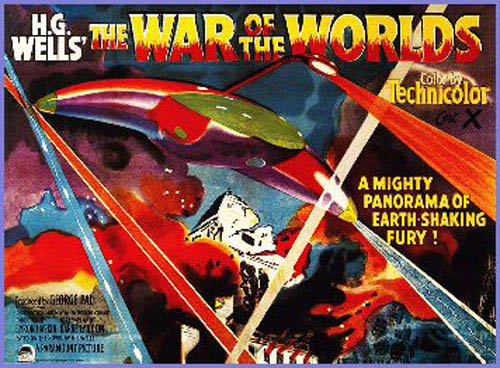
CARL PHILLIPS
Do you hear it? It’s a curious humming sound that seems to come from inside the object. I’ll move the microphone nearer. Now…
(PAUSE)
CARL PHILLIPS
Now we’re not more than twenty-five feet away. Can you hear it now? Oh, Professor Pierson!
PROF. PIERSON
Yes, Mr. Phillips?
CARL PHILLIPS
Can you tell us the meaning of that scraping noise inside the thing?
PROF. PIERSON
Possibly the unequal cooling of its surface.
CARL PHILLIPS
I see, do you still think it’s a meteor, Professor?
PROF. PIERSON
I don’t know what to think. The metal casing is definitely extraterrestrial… not found on this earth. Friction with the earth’s atmosphere usually tears holes in a meteorite. This thing is smooth and, as you can see, of cylindrical shape.
CARL PHILLIPS
Just a minute! Something’s happening! Ladies and gentlemen, this is terrific! This end of the thing is beginning to flake off! The top is beginning to rotate like a screw and the thing must be hollow!
VOICES
She’s movin’! Look, the darn thing’s unscrewing! Stand back, there! Keep those men back, I tell you! Maybe there’s men in it trying to escape! It’s red hot, they’ll burn to a cinder! Keep back there. Keep those idiots back!
(SUDDENLY THE CLANKING SOUND OF A HUGE PIECE OF FALLING METAL)
VOICES
She’s off! The top’s loose! Look out there! Stand back!
CARL PHILLIPS
Ladies and gentlemen, this is the most terrifying thing I have ever witnessed… Wait a minute! Someone’s crawling out of the hollow top. Someone or… something. I can see peering out of that black hole two luminous disks . . are they eyes? It might be a face. It might be…
(SHOUT OF AWE FROM THE CROWD)
CARL PHILLIPS
Good heavens, something’s wriggling out of the shadow like a gray snake. Now it’s another one, and another one, and another one! They look like tentacles to me. I can see the thing’s body now. It’s large, large as a bear and it glistens like wet leather. But that face, it… Ladies and gentlemen, it’s indescribable. I can hardly force myself to keep looking at it, so awful. The eyes are black and gleam like a serpent. The mouth is V-shaped with saliva dripping from its rimless lips that seem to quiver and pulsate. The monster or whatever it is can hardly move. It seems weighed down by… possibly gravity or something. The thing’s… rising up now, and the crowd falls back now. They’ve seen plenty. This is the most extraordinary experience, ladies and gentlemen. I can’t find words… I’ll pull this microphone with me as I talk. I’ll have to stop the description until I can take a new position. Hold on, will you please, I’ll be right back in a minute…
(FADE INTO PIANO)
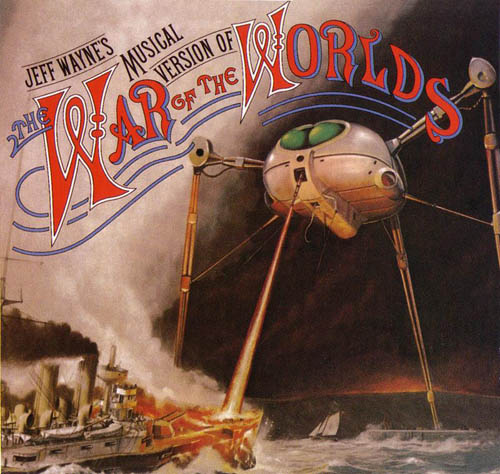
ANNOUNCER
We are bringing you an eyewitness account of what’s happening on the Wilmuth farm, Grovers Mill, New Jersey.
(MORE PIANO)
ANNOUNCER
We now return you to Carl Phillips at Grovers Mill.
CARL PHILLIPS
Ladies and gent… Am I on? Ladies and gentlemen, ladies and gentlemen, here I am, back of a stone wall that adjoins Mr. Wilmuth’s garden. From here I get a sweep of the whole scene. I’ll give you every detail as long as I can talk and as long as I can see.
More state police have arrived They’re drawing up a cordon in front of the pit, about thirty of them. No need to push the crowd back now. They’re willing to keep their distance.
The captain is conferring with someone. We can’t quite see who. Oh yes, I believe it’s Professor Pierson. Yes, it is. Now they’ve parted and the Professor moves around one side, studying the object, while the captain and two policemen advance with something in their hands.
I can see it now. It’s a white handkerchief tied to a pole… a flag of truce. If those creatures know what that means… what ANYTHING means…
Wait a minute! Something’s happening…
(HISSING SOUND FOLLOWED BY A HUMMING THAT INCREASES IN INTENSITY)
CARL PHILLIPS
A humped shape is rising out of the pit. I can make out a small beam of light against a mirror. What’s that? There’s a jet of flame springing from that mirror, and it leaps right at the advancing men. It strikes them head on! Good Lord, they’re turning into flame!
(SCREAMS AND UNEARTHLY SHRIEKS)
CARL PHILLIPS
Now the whole field’s caught fire.
(EXPLOSION)
CARL PHILLIPS
The woods… the barns… the gas tanks of automobiles… it’s spreading everywhere. It’s coming this way. About twenty yards to my right…
(ABRUPT DEAD SILENCE)
ANNOUNCER
Ladies and gentlemen, due to circumstances beyond our control, we are unable to continue the broadcast from Grovers Mill. Evidently there’s some difficulty with our field transmission. However, we will return to that point at the earliest opportunity.
In the meantime, we have a late bulletin from San Diego, California.
Professor Indellkoffer, speaking at a dinner of the California Astronomical Society, expressed the opinion that the explosions on Mars are undoubtedly nothing more than severe volcanic disturbances on the surface of the planet.
We continue now with our piano interlude.
(PIANO… THEN CUT)
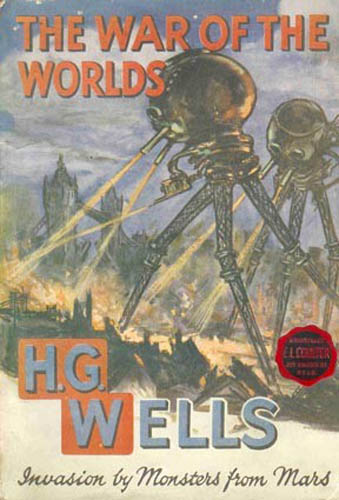
ANNOUNCER TWO
Ladies and gentlemen, I have just been handed a message that came in from Grovers Mill by telephone. Just one moment please.
At least forty people, including six state troopers lie dead in a field east of the village of Grovers Mill, their bodies burned and distorted beyond all possible recognition.
The next voice you hear will be that of Brigadier General Montgomery Smith, commander of the state militia at Trenton, New Jersey.
GENERAL MONTGOMERY SMITH
I have been requested by the governor of New Jersey to place the counties of Mercer and Middlesex as far west as Princeton, and east to Jamesburg, under martial law. No one will be permitted to enter this area except by special pass issued by state or military authorities.
Four companies of state militia are proceeding from Trenton to Grovers Mill, and will aid in the evacuation of homes within the range of military operations.
Thank you.
ANNOUNCER TWO
You have just been listening to General Montgomery Smith commanding the state militia at Trenton.
In the meantime, further details of the catastrophe at Grovers Mill are coming in. The strange creatures, after unleashing their deadly assault, crawled back in their pit and made no attempt to prevent the efforts of the firemen to recover the bodies and extinguish the fire. The combined fire departments of Mercer County are fighting the flames which menace the entire countryside.
We have been unable to establish any contact with our mobile unit at Grovers Mill, but we hope to be able to return you there at the earliest possible moment. In the meantime we take you to… just one moment please!
(LONG PAUSE)
(WHISPER)
ANNOUNCER TWO
Ladies and gentlemen, I have just been informed that we have finally established communication with an eyewitness of the tragedy.
Professor Pierson has been located at a farmhouse near Grovers Mill where he has established an emergency observation post. As a scientist, he will give you his explanation of the calamity. The next voice you hear will be that of Professor Pierson, brought to you by direct wire.
Professor Pierson.
(FEEDBACK, THEN FILTERED VOICE)
PROF. PIERSON
Of the creatures in the rocket cylinder at Grovers Mill, I can give you no authoritative information ââ?¬â? either to their nature, their origin, or their purposes here on earth. Of their destructive instrument I might venture some conjectural explanation.
For want of a better term, I shall refer to the mysterious weapon as a heat ray. It’s all too evident that these creatures have scientific knowledge far in advance of our own. It’s my guess that in some way they are able to generate an intense heat in a chamber of practically absolute no conductivity. This intense heat they project in a parallel beam against any object they choose, by means of a polished parabolic mirror of unknown composition, much as the mirror of a lighthouse projects a beam of light. That is my conjecture of the origin of the heat ray…
ANNOUNCER TWO
Thank you, Professor Pierson.
Ladies and gentlemen, here is a bulletin from Trenton. It is a brief statement informing us that the charred body of Carl Phillips has been identified in a Trenton hospital.
Now here’s another bulletin from Washington, D.C. The office of the director of the National Red Cross reports ten units of Red Cross emergency workers have been assigned to the headquarters of the state militia stationed outside Grovers Mill, New Jersey.
Here’s a bulletin from state police, Princeton Junction: The fires at Grovers Mill and vicinity are now under control. Scouts report all quiet in the pit, and there is no sign of life appearing from the mouth of the cylinder…
And now, ladies and gentlemen, we have a special statement from Mr. Harry McDonald, vice-president in charge of operations.
HARRY MC DONALD
We have received a request from the state militia at Trenton to place at their disposal our entire broadcasting facilities. In view of the gravity of the situation, and believing that radio has a responsibility to serve in the public interest at all times, we are turning over our facilities to the state militia at Trenton.
ANNOUNCER TWO
We take you now to the field headquarters of the state militia near Grovers Mill, New Jersey.
CAPTAIN LANSING
This is Captain Lansing of the signal corps, attached to the state militia, now engaged in military operations in the vicinity of Grovers Mill. Situation arising from the reported presence of certain individuals of unidentified nature is now under complete control.
The cylindrical object which lies in a pit directly below our position is surrounded on all sides by eight battalions of infantry. Without heavy field pieces, but adequately armed with rifles and machine guns. All cause for alarm, if such cause ever existed, is now entirely unjustified.
The things, whatever they are, do not even venture to poke their heads above the pit. I can see their hiding place plainly in the glare of the searchlights here. With all their reported resources, these creatures can scarcely stand up against heavy machine-gun fire.
Anyway, it’s an interesting outing for the troops. I can make out their khaki uniforms, crossing back and forth in front of the lights. It looks almost like a real war.
There appears to be some slight smoke in the woods bordering the Millstone River. Probably fire started by campers.
Well, we ought to see some action soon. One of the companies is deploying on the left flank. A quick thrust and it will all be over.
Now wait a minute! I see something on top of the cylinder. No, it’s nothing but a shadow. Now the troops are on the edge of the Wilmuth farm. Seven thousand armed men closing in on an old metal tube. A tub rather.
Wait, that wasn’t a shadow! It’s something moving… solid metal… kind of a shield like affair rising up out of the cylinder… It’s going higher and higher. Why, it’s standing on legs… actually rearing up on a sort of metal framework. Now it’s reaching above the trees and the searchlights are on it. Hold on!
ANNOUNCER
Ladies and gentlemen, I have a grave announcement to make.
Incredible as it may seem, both the observations of science and the evidence of our eyes lead to the inescapable assumption that those strange beings who landed in the Jersey farmlands tonight are the vanguard of an invading army from the planet Mars.
The battle which took place tonight at Grovers Mill has ended in one of the most startling defeats ever suffered by an army in modern times; seven thousand men armed with rifles and machine guns pitted against a single fighting machine of the invaders from Mars. One hundred and twenty known survivors. The rest strewn over the battle area from Grovers Mill to Plainsboro, crushed and trampled to death under the metal feet of the monster, or burned to cinders by its heat ray.
The monster is now in control of the middle section of New Jersey and has effectively cut the state through its center. Communication lines are down from Pennsylvania to the Atlantic Ocean.
Railroad tracks are torn and service from New York to Philadelphia discontinued except routing some of the trains through Allentown and Phoenixville.
Highways to the north, south, and west are clogged with frantic human traffic. Police and army reserves are unable to control the mad flight. By morning the fugitives will have swelled Philadelphia, Camden, and Trenton, it is estimated, to twice their normal population.
Martial law prevails throughout New Jersey and eastern Pennsylvania.
At this time we take you to Washington for a special broadcast on the National Emergency… the Secretary of the Interior…
SECRETARY OF THE INTERIOR
Citizens of the nation: I shall not try to conceal the gravity of the situation that confronts the country, nor the concern of your government in protecting the lives and property of its people. However, I wish to impress upon you ââ?¬â? private citizens and public officials, all of you ââ?¬â? the urgent need of calm and resourceful action.
Fortunately, this formidable enemy is still confined to a comparatively small area, and we may place our faith in the military forces to keep them there.
In the meantime placing our faith in God we must continue the performance of our duties each and every one of us, so that we may confront this destructive adversary with a nation united, courageous, and consecrated to the preservation of human supremacy on this earth.
I thank you.
ANNOUNCER
You have just heard the secretary of the Interior speaking from Washington.
Bulletins too numerous to read are piling up in the studio here.
We are informed the central portion of New Jersey is blacked out from radio communication due to the effect of the heat ray upon power lines and electrical equipment.
Here is a special bulletin New York. Cables have been received from English, French, and German scientific bodies offering assistance.
Astronomers report continued gas outbursts at regular intervals on the planet Mars. The majority voice the opinion that the enemy will be reinforced by additional rocket machines.
There have been several attempts made to locate Professor Pierson of Princeton, who has observed Martians at close range. It is feared he was lost in the recent battle.
Langham Field, Virginia: Scouting planes report three Martian machines visible above treetops, moving north towards Somerville with population fleeing ahead of them. The heat ray is not in use; although advancing at express-train speed, invaders pick their way carefully. They seem to be making a conscious effort to avoid destruction of cities and countryside. However, they stop to uproot power lines, bridges, and railroad tracks. Their apparent objective is to crush resistance, paralyze communication, and disorganize human society.
Here is a bulletin from Basking Ridge, New Jersey: Coon hunters have stumbled on a second cylinder similar to the first embedded in the great swamp twenty miles south of Morristown.
Army fieldpieces are proceeding from Newark to blow up second invading unit before cylinder can be opened and the fighting machine rigged. They are taking up a position in the foothills of Watchung Mountains.
Another bulletin from Langham Field, Virginia: Scouting planes report enemy machines, now three in number, increasing speed northward kicking over houses and trees in their evident haste to form a conjunction with their allies south of Morristown.
Machines also sighted by telephone operator east of Middlesex within ten miles of Plainfield.
Here’s a bulletin from Winston Field, Long Island: A fleet of army bombers carrying heavy explosives flying north in pursuit of enemy. Scouting planes act as guides. They keep the speeding enemy in sight.
Just a moment please, ladies and gentlemen. We’ve er… We’ve run special wires to the artillery line in adjacent villages to give you direct reports in the zone of the advancing enemy. First we take you to the battery of the 22nd Field Artillery, located in the Watchtung Mountains.
OFFICER
Range, thirty-two meters.
GUNNER
Thirty-two meters.
OFFICER
Projection, thirty-nine degrees.
GUNNER
Thirty-nine degrees.
OFFICER
Fire!
(BOOM OF HEAVY GUN… PAUSE)
OBSERVER
One hundred and forty yards to the right, sir.
OFFICER
Shift range… thirty-one meters.
GUNNER
Thirty-one meters
OFFICER
Projection… thirty-seven degrees.
GUNNER
Thirty-seven degrees.
OFFICER
Fire!
(BOOM OF HEAVY GUN… PAUSE)
OBSERVER
A hit, sir! We got the tripod of one of them. They’ve stopped. The others are trying to repair it.
OFFICER
Quick, get the range! Shift thirty meters.
GUNNER
Thirty meters.
OFFICER
Projection… twenty-seven degrees.
GUNNER
Twenty-seven degrees.
OFFICER
Fire!
(BOOM OF HEAVY GUN… PAUSE)
OBSERVER
Can’t see the shell land, sir. They’re letting off a smoke.
OFFICER
What is it?
OBSERVER
A black smoke, sir. Moving this way. Lying close to the ground. It’s moving fast.
OFFICER
Put on gas masks.
(PAUSE. VOICES NOW MUFFLED)
OFFICER
Get ready to fire. Shift to twenty-four meters.
GUNNER
Twenty-four meters.
OFFICER
Projection, twenty-four degrees.
GUNNER
Twenty-four degrees.
OFFICER
Fire!
(BOOM)
OBSERVER
Still can’t see, sir. The smoke’s coming nearer.
OFFICER
Get the range. (COUGHS)
OBSERVER
Twenty-three meters. (COUGHS)
OFFICER
Twenty-three meters. (COUGHS)
GUNNER
Twenty-three meters (COUGHS)
OBSERVER
Projection, twenty-two degrees. (COUGHING)
OFFICER
Twenty-two degrees. (FADE-IN COUGHING)
(CUT TO SOUND OF AIRPLANE MOTOR)
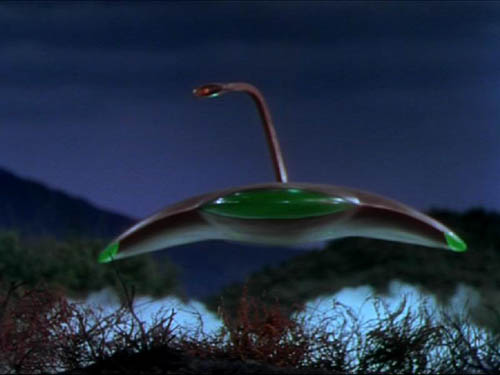
COMMANDER
Army bombing plane, V-8-43, off Bayonne, New Jersey, Lieutenant Voght, commanding eight bombers. Reporting to Commander Fairfax, Langham Field… This is Voght, reporting to Commander Fairfax, Langham Field… Enemy tripod machines now in sight. Reinforced by three machines from the Morristown cylinder… Six altogether. One machine partially crippled. Believed hit by a shell from army gun in Watchung Mountains. Guns now appear silent.
A heavy black fog hanging close to the earth… of extreme density, nature unknown. No sign of heat ray. Enemy now turns east, crossing Passaic River into the Jersey marshes. Another straddles the Pulaski Skyway. Evident objective is New York City.
They’re pushing down a high tension power station. The machines are close together now, and we’re ready to attack.
Planes circling, ready to strike. A thousand yards and we’ll be over the first ââ?¬â? eight hundred yards… six hundred… four hundred… two hundred… There they go! The giant arm raised…
(SOUND OF HEAT RAY)
COMMANDER
Green flash! They’re spraying us with flame! Two thousand feet. Engines are giving out. No chance to release bombs. Only one thing left… drop on them, plane and all. We’re diving on the first one. Now the engine’s gone! Eight… (PLANE GOES DOWN)
OPERATOR ONE
This is Bayonne, New Jersey, calling Langham Field… This is Bayonne, New Jersey, calling Langham Field… Come in, please…
OPERATOR TWO
This is Langham Field… Go ahead…
OPERATOR ONE
Eight army bombers in engagement with enemy tripod machines over Jersey flats. Engines incapacitated by heat ray. All crashed. One enemy machine destroyed. Enemy now discharging heavy black smoke in direction of…
OPERATOR THREE
This is Newark, New Jersey… This is Newark, New Jersey… Warning! Poisonous black smoke pouring in from Jersey marshes. Reaches South Street. Gas masks useless. Urge population to move into open spaces… automobiles use Routes 7, 23, 24… Avoid congested areas. Smoke now spreading over Raymond Boulevard…
OPERATOR FOUR
2X2L… calling CQ… 2X2L… calling CQ… 2X2L… calling 8X3R… Come in, please…
OPERATOR FIVE
This is 8X3R… coming back at 2X2L.
OPERATOR FOUR
How’s reception? How’s reception? K, please (PAUSE)
Where are you, 8X3R? What’s the matter? Where are you?
(BELLS RINGING OVER CITY GRADUALLY DIMINISHING)
ANNOUNCER
I’m speaking from the roof of Broadcasting Building, New York City…
I’m speaking from the roof of Broadcasting Building, New York City. The bells you hear are ringing to warn the people to evacuate the city as the Martians approach. Estimated in last two hours three million people have moved out along the roads to the north…
Hutchison River Parkway still kept open for motor traffic. Avoid bridges to Long Island… hopelessly jammed. All communication with Jersey shore closed ten minutes ago.
No more defenses. Our army is… wiped out… artillery, air force, everything wiped out.
This may be the last broadcast. We’ll stay here to the end…
(VOICES SINGING HYMN)
ANNOUNCER
People are holding service here below us… in the cathedral.
(SOUND OF BOAT WHISTLES)
ANNOUNCER
Now I look down the harbor. All manner of boats, overloaded with fleeing population, pulling out from docks.
Streets are all jammed. Noise in crowds like New Year’s Eve in city. Wait a minute… The… the enemy is now in sight above the Palisades. Five ââ?¬â? five great machines. First one is crossing the river. I can see it from here, wading… wading the Hudson like a man wading through a brook…
A bulletin is handed me…
Martian cylinders are falling all over the country. One outside of Buffalo, one in Chicago… St. Louis… seem to be timed and spaced…
Now the first machine reaches the shore. He stands watching, looking over the city. His steel, cowlish head is even with the skyscrapers. He waits for the others. They rise like a line of new towers on the city’s west side…
Now they’re lifting their metal hands. This is the end now. Smoke comes out… black smoke, drifting over the city. People in the streets see it now. They’re running towards the East River… thousands of them, dropping in like rats.
Now the smoke’s spreading faster. It’s reached Times Square. People are trying to run away from it, but it’s no use. They’re falling like flies.
Now the smoke’s crossing Sixth Avenue… Fifth Avenue… a… a hundred yards away… it’s fifty feet…
(BODY FALLS)
(SOUNDS OF CITY IN TURMOIL, FOGHORNS, WHISTLES… )
OPERATOR FOUR
2X2L calling CQ… 2X2L calling CQ… 2X2L calling CQ… New York. Isn’t there anyone on the air? Isn’t there anyone on the air? Isn’t there anyone… 2X2L…
CBS ANNOUNCER (INTERRUPTS THE ACTUAL RADIO PLAY)
You are listening to a CBS presentation of Orson Welles and the Mercury Theatre on the Air in an original dramatization of “The War of the Worlds” by H. G. Wells. The performance will continue after a brief intermission. This is the Columbia Broadcasting System.
(MUSIC)
PROF. PIERSON
As I set down these notes on paper, I’m obsessed by the thought that I may be the last living man on Earth. I have been hiding in this empty house near Grovers Mill ââ?¬â? a small island of daylight cut off by the black smoke from the rest of the world.
All that happened before the arrival of these monstrous creatures in the world now seems part of another life… a life that has no continuity with the present, furtive existence of the lonely derelict who pencils these words on the back of some astronomical notes bearing the signature of Richard Pierson.
I look down at my blackened hands, my torn shoes, my tattered clothes, and I… try to connect them with a professor who lives at Princeton, and who on the night of October 30th, glimpsed through his telescope an orange splash of light on a distant planet.
My wife, my colleagues, my students, my books, my observatory, my… my world… where are they? Did they ever exist? Am I Richard Pierson? What day is it? Do days exist without calendars? Does time pass when there are no human hands left to wind the clocks?…
In writing down my daily life I tell myself I shall preserve human history between the dark covers of this little book that was meant to record the movements of the stars, but… to write I must live, and to live, I must eat… I find moldy bread in the kitchen, and an orange not too spoiled to swallow.
I keep watch at the window. From time to time I catch sight of a… Martian above the black smoke. The smoke still holds the house in its black coil, but… at length there is a hissing sound and suddenly I see a Martian mounted on his machine, spraying the air with a jet of steam, as if to dissipate the smoke. I watch in a corner as his huge metal legs nearly brush against the house. Exhausted by terror, I fall asleep… it’s morning…
(QUIETLY)
Morning! Sun streams in the window. The black cloud of gas has lifted, and the scorched meadows to the north look as though a black snowstorm has passed over them.
I venture from the house. I make my way to a road. No traffic. Here and there a wrecked car, baggage overturned, a blackened skeleton. I push on north.
For some reason I feel safer trailing these monsters than running away from them. And I keep a careful watch. I have seen the Martians… feed. Should one of their machines appear over the top of trees, I am ready to fling myself flat on the earth.
I come to a chestnut tree. October… chestnuts are ripe. I fill my pockets. I must keep alive.
Two days I wander in a vague northerly direction through a desolate world.
Finally I notice a living creature… a small red squirrel in a beech tree. I stare at him, and wonder. He stares back at me. I believe at that moment the animal and I shared the same emotion. . .the joy of finding another living being.
I push on north. I… find dead cows in a brackish field, and beyond the charred ruins of a dairy, the silo remains standing guard over the waste land like a lighthouse deserted by the sea. Astride the silo perches a weathercock. The arrow points north.
Next day I come to a city… a city vaguely familiar in its contours, yet its buildings strangely dwarfed and leveled off, as if a giant had sliced off its highest towers with a capricious sweep of his hand. I reached the outskirts. I found Newark, undemolished, but humbled by some whim of the advancing Martians.
Presently, with an odd feeling of being watched, I caught sight of something crouching in a doorway. I made a step towards it… it rose up and became a man! ââ?¬â? a man, armed with a large knife.
STRANGER
(OFF-MIC) Stop!
(CLOSER) Where do you come from?
PROF. PIERSON
I come from… from many places! A long time ago from Princeton.
STRANGER
Princeton, huh? That’s near Grovers Mill!
PROF. PIERSON
Yes.
STRANGER
Grovers Mill… (LAUGHS AS AT A GREAT JOKE, THEN SOUNDS ANGRY)
There’s no food here! This is my country… all this end of town down to the river. There’s only food for one…
Which way are you going?
PROF. PIERSON
I don’t know. I guess I’m looking for ââ?¬â? for people.
STRANGER
(NERVOUSLY) What was that? Did you hear something just then?
PROF. PIERSON
No… only a bird… (AMAZED) A live bird!
STRANGER
Yeah… You get to know that birds have shadows these days… Hey, we’re in the open here. Let’s crawl in this doorway here and talk.
PROF. PIERSON
Have you seen any… Martians?
STRANGER
Naah. They’ve gone over to New York. At night the sky is alive with their lights. Just as if people were still livin’ in it. By daylight you can’t see them. Five days ago a couple of them carried somethin’ big across the flats from the airport. I think they’re learning how to fly.
PROF. PIERSON
Fly?
STRANGER
Yeah, fly.
PROF. PIERSON
Then it’s all over with humanity.
Stranger, there’s still you and I. Two of us left.
STRANGER
Yeah… They got themselves in solid; they wrecked the greatest country in the world. Those green stars, they’re probably falling somewhere every night. They’ve only lost one machine. There isn’t anything to do. We’re done. We’re licked.
PROF. PIERSON
Where were you? You’re in a uniform.
STRANGER
Yeah, what’s left of it. I was in the militia ââ?¬â? National Guard?… Heh! That’s good! There wasn’t any war… any more than there’s war between men and ants!
PROF. PIERSON
Yes, but we’re… eatable ants! I found that out… What’ll they do with us?
STRANGER
I’ve thought it all out. Right now we’re caught as we’re wanted. The Martian only has to go a few miles to get a crowd on the run. But they won’t keep on doing that. They’ll begin catching us systematic-like ââ?¬â? keeping the best and storing us in cages and things. They haven’t begun on us yet!
PROF. PIERSON
Not begun?
STRANGER
Not begun! All that’s happened so far is because we don’t have sense enough to keep quiet… botherin’ them with guns and such stuff and losing our heads and rushing off in crowds. Now instead of our rushing around blind we’ve got to fix ourselves up ââ?¬â? fix ourselves up according to the way things are NOW. Cities, nations, civilization, progress… done.
PROF. PIERSON
Yes, but if that’s so… what is there to live for?
STRANGER
Well, there won’t be any more concerts for a million years or so, and no nice little dinners at restaurants. If it’s amusement you’re after, I guess the game’s up.
PROF. PIERSON
What is there left?
STRANGER
Life! That’s what! I want to live. Yeah, and so do you. We’re not going to be exterminated. And I don’t mean to be caught, either! Tamed, and fattened, and bred, like an ox!
PROF. PIERSON
What are you going to do?
STRANGER
I’m going on… right under their feet. I got a plan. We men as men are finished. We don’t know enough. We gotta learn plenty before we’ve got a chance. And we’ve got to live and keep free while we learn, see? I’ve thought it all out, see.
PROF. PIERSON
Tell me the rest.
STRANGER
Well, it isn’t all of us that are made for wild beasts, and that’s what it’s got to be! That’s why I watched you… watched YOU.
All these little office workers that used to live in these houses ââ?¬â? they’d be no good. They haven’t any stuff in ‘em.
They used to run… run off to work. I’ve seen hundreds of ‘em, running to catch their commuter’s train in the morning afraid they’d be canned if they didn’t; running back at night afraid they won’t be in time for dinner. Lives insured and a little invested in case of accidents.
Yeah, and on Sundays, worried about the hereafter. The Martians will be a godsend for those guys. Nice roomy cages, good food, careful breeding, no worries.
Yeah, after a week or so chasing about the fields on empty stomachs they’ll come and be glad to be caught.
PROF. PIERSON
You’ve thought it all out, haven’t you?
STRANGER
Sure… you bet I have! That isn’t all. These Martians, they’re going to make pets of some of ‘em, train ‘em to do tricks. Who knows? Get sentimental over the pet boy who grew up and had to be killed… Yeah… and some, maybe, they’ll train to hunt us!
PROF. PIERSON
No, that’s impossible. No human being…
STRANGER
Yes they will. There’s men who’ll do it gladly. If one of them ever comes after me, why…
PROF. PIERSON
In the meantime… you and I and others like us… where are we to live when the Martians own the earth?
STRANGER
I’ve got it all figured out.
We’ll live underground. I’ve been thinking about the sewers. Under New York there are miles and miles of ‘em. The main ones are big enough for anybody. And there’s cellars, vaults, underground storerooms, railway tunnels, subways…
You begin to see, eh? We’ll get a bunch of strong men together. No weak ones; that rubbish ââ?¬â? out!
PROF. PIERSON
As you meant me to go?
STRANGER
Well, I… gave you a chance, didn’t I?
PROF. PIERSON
We won’t quarrel about that. Go on.
STRANGER
Well… we’ve got to make safe places for us to stay in, see? Get all the books we can… science books. That’s where men like you come in, see? We’ll raid the museums, we’ll even spy on the Martians.
It may not be so much we have to learn before ââ?¬â? listen, just imagine this
four or five of their own fighting machines suddenly start off ââ?¬â? heat rays right and left and not a Martian in ‘em. Not a Martian in ‘em, see? But MEN ââ?¬â? men who’ve learned the way how. It may even be in our time.
Gee! Imagine having one of them lovely things with a heat ray wide and free! We’d turn it on Martians, we’d turn it on men. We’d bring everybody down on their knees!
PROF. PIERSON
That’s your plan?
STRANGER
Yeah!
You, me, and a few more of us… we’d own the world!
PROF. PIERSON
I see…
STRANGER
(FADING OUT) Hey… hey, what’s the matter?… Where are you going?
PROF. PIERSON
Not to your world!
Bye, stranger…
(PAUSE)
PROF. PIERSON
Well, after parting with the artilleryman, I came at last to the Holland Tunnel. I entered that silent tube anxious to know the fate of the great city on the other side of the Hudson. Cautiously I came out of the tunnel and made my way up Canal Street.
I reached Fourteenth Street, and there again were black powder and several bodies, and an evil ominous smell from the gratings of the cellars of some of the houses.
I wandered up through the Thirties and Forties; I stood alone on Times Square. I caught sight of a lean dog running down Seventh Avenue with a piece of dark brown meat in his jaws, and a pack of starving mongrels at his heels. He made a wide circle around me, as though he feared I might prove a fresh competitor.
I walked up Broadway in the direction of that strange powder ââ?¬â? past silent shop windows, displaying their mute wares to empty sidewalks ââ?¬â? past the Capitol Theatre, silent, dark ââ?¬â? past a shooting gallery, where a row of empty guns faced an arrested line of wooden ducks.
Near Columbus Circle I noticed models of 1939 motorcars in the showrooms facing empty streets. From over the top of the General Motors Building, I watched a flock of black birds circling in the sky. I hurried on.
Suddenly I caught sight of the hood of a Martian machine, standing somewhere in Central Park, gleaming in the late afternoon sun. An insane idea! I rushed recklessly across Columbus Circle and into the Park. I climbed a small hill above the pond at Sixtieth Street and from there I could see, standing in a silent row along the mall, nineteen of those great metal Titans, their cowls empty, their steel arms hanging listlessly by their sides. I looked in vain for the monsters that inhabit those machines.
Suddenly, my eyes were attracted to the immense flock of black birds that hovered directly below me. They circled to the ground, and there before my eyes, stark and silent, lay the Martians, with the hungry birds pecking and tearing brown shreds of flesh from their dead bodies.
Later when their bodies were examined in the laboratories, it was found that they were killed by the putrefactive and disease bacteria against which their systems were unprepared… slain, after all man’s defenses had failed, by the humblest thing that God in His wisdom has put upon this earth.
Before the cylinder fell there was a general persuasion that through all the deep of space no life existed beyond the petty surface of our minute sphere. Now we see further. Dim and wonderful is the vision I have conjured up in my mind of life spreading slowly from this little seedbed of the solar system throughout the inanimate vastnesses of sidereal space, but… that’s a remote dream. It may be that the destruction of the Martians is only a reprieve. To them, and not to us, is the future ordained perhaps.
Strange it now seems to sit in my peaceful study at Princeton writing down this last chapter of the record begun at a deserted farm in Grovers Mill. Strange to watch children… playing in the streets. Strange to see young people strolling on the green, where the new spring grass heals the last black scars of a bruised earth. Strange to watch the sightseers enter the museum where the dissembled parts of a Martian machine are kept on public view. Strange when I recall the time when I first saw it, bright and clean-cut, hard, and silent, under the dawn of that last great day…
(MUSIC SWELLS UP AND OUT)
ORSON WELLES
This is Orson Welles, ladies and gentlemen, out of character to assure you that “The War of The Worlds” has no further significance than as the holiday offering it was intended to be. The Mercury Theatre’s own radio version of dressing up in a sheet and jumping out of a bush and saying Boo!
Starting now, we couldn’t soap all your windows and steal all your garden gates by tomorrow night… so we did the best next thing. We annihilated the world before your very ears, and utterly destroyed the C. B. S. You will be relieved, I hope, to learn that we didn’t mean it, and that both institutions are still open for business.
So goodbye everybody, and remember please, for the next day or so, the terrible lesson you learned tonight. That grinning, glowing, globular invader of your living room is an inhabitant of the pumpkin patch, and if your doorbell rings and nobody’s there, that was no Martian… it’s Halloween.
(MERCURY THEATRE THEME UP FULL, THEN DOWN)
ANNOUNCER
Tonight the Columbia Broadcasting System and its affiliated stations coast-to-coast have brought you “The War of the Worlds,” by H. G. Wells, the seventeenth in its weekly series of dramatic broadcasts featuring Orson Welles and the Mercury Theatre on the Air.
Next week we present a dramatization of three famous short stories.
This is the Columbia Broadcasting System.

Photo: Mathieu Bertrand Struck

* * *









